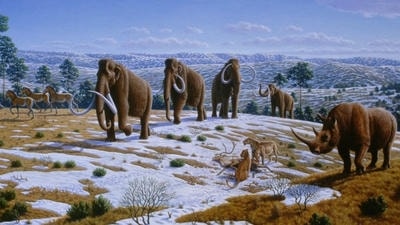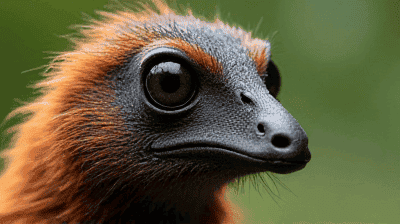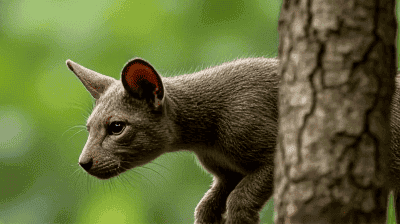
The concept of de-extinction—reviving species that have gone extinct—was once relegated to the realm of science fiction, but recent advancements in genetic engineering and biotechnology have brought this idea closer to reality. As we grapple with the consequences of biodiversity loss, a pressing question emerges: Could bringing back lost species play a role in restoring ecosystems? An exploration of this notion includes understanding the implications of extinction, the challenges of de-extinction, and case studies that highlight the potential impact of reviving lost species.
Extinction is a natural process, part of the evolutionary cycle that has been occurring for millions of years. However, the current rate of extinction is unprecedented, primarily driven by human activities such as habitat destruction, pollution, climate change, and overexploitation. Key statistics illustrating the biodiversity crisis include:
Species Loss: According to the World Wildlife Fund, around one million species are currently at risk of extinction, many within the next few decades.
Ecosystem Disruption: The loss of a single species can have cascading effects throughout an ecosystem, leading to declines in other species and changes in habitat structure.
Ecosystem Services: Biodiversity contributes to essential ecosystem services such as pollination, water purification, and climate regulation. Its loss can jeopardize these services and threaten human well-being.
De-extinction debt refers to the idea that the ongoing loss of species results in a "debt" that future ecosystems must pay off. As species disappear, ecosystems become increasingly unbalanced, lacking the functional diversity needed to thrive. Reviving these lost species could theoretically address some of the disruptions caused by extinction. This hinges upon a few key concepts:
Keystone Species: Some species play crucial roles within their ecosystems—known as keystone species. Their loss can lead to significant changes in community structure and function. Restoring these species may help rebalance ecosystems.
Ecological Networks: When species disappear, the relationships they maintained with other organisms can collapse. Reviving lost species could reestablish these connections and restore the integrity of ecological networks.
Ecosystem Resilience: Diverse ecosystems are generally more resilient to environmental changes. Reintroducing lost species could enhance resilience and stability in ecosystems that have been altered by human impacts.

The revival of extinct species is no longer just theoretical. Advances in genetic engineering and related technologies have opened new possibilities, including:
Cloning: Using DNA from extinct individuals to create a genetic clone is one approach to de-extinction. The woolly mammoth is a prominent example, with scientists working to bring this species back using closely related Asian elephant DNA.
CRISPR Gene Editing: This revolutionary technology allows for precise modifications in DNA sequences. Researchers are exploring how CRISPR can be used to insert genes from extinct species into the genomes of extant relatives, potentially reviving traits that disappeared with extinction.
Selective Breeding: Another method involves breeding existing species to enhance desired traits from extinct relatives. This has been proposed for species like the passenger pigeon, where careful selection could create a bird with similar ecological functions.
While the potential benefits of de-extinction are intriguing, several ethical dilemmas arise:
Resource Allocation: Should resources be directed toward reviving extinct species when many endangered species currently need help? Some argue that preserving existing biodiversity should be a priority over resurrecting lost species.
Ecological Interactions: Reviving species without understanding their ecological context could have unintended consequences. Will these species be able to adapt to the current environment, and how might they interact with existing species?
Conservation Dependency: The allure of de-extinction may divert attention from the urgent need to address existing conservation challenges. Relying on de-extinction could undermine efforts to preserve habitats and prevent further extinctions.
One of the most discussed candidates for de-extinction is the woolly mammoth. Researchers are attempting to create a hybrid using Asian elephant DNA and traits specific to mammoths.
Significance: As a keystone species in the tundra ecosystem, the woolly mammoth played a critical role in shaping its environment through grazing and trampling, which maintained grasslands and encouraged plant diversity.
Current Efforts: Projects, such as the one led by the Harvard-based Mammoth Revive DNA Project, aim to create a cold-adapted elephant with mammoth-like characteristics. The hope is that reintroducing such hybrids could help restore tundra ecosystem dynamics.
The passenger pigeon, once the most abundant bird in North America, went extinct in the early 20th century due to overhunting and habitat destruction.
Restoration Efforts: The concept of "de-extinction" has been proposed through selective breeding of the closely related mourning dove and other Columbidae species to recreate traits reminiscent of passenger pigeons.
Ecological Role: Passenger pigeons were vital for seed dispersal and maintaining forest dynamics. Their return could help restore forests and their ecological functions.
The thylacine, or Tasmanian tiger, was a carnivorous marsupial that went extinct in the early 20th century. Interest in its de-extinction has been rekindled through cloning technology.
Potential: The thylacine played a unique role in its Tasmanian ecosystem, and its revival could contribute to the ecological balance within its native range.
Challenges: As with other de-extinction efforts, challenges include finding viable DNA samples and assessing potential ecological impacts.

Restoring lost species can help reestablish the balance within ecosystems that have been disrupted:
Keystone Effects: By reintroducing keystone species, we can restore crucial ecological functions that maintain the health of the entire ecosystem.
Biodiversity Enhancement: The presence of lost species can increase overall biodiversity, leading to more resilient and complex ecosystems.
De-extinction initiatives could inspire broader conservation efforts:
Public Engagement: The excitement around de-extinction can raise awareness about biodiversity loss and mobilize public interest in conservation.
Funding Opportunities: Investing in de-extinction projects could also benefit existing conservation efforts through funding and research collaboration.
Research into de-extinction can provide valuable insights into genetics, ecology, and environmental science:
Genetic Diversity: Efforts to revive species highlight the importance of genetic diversity and how it influences species survival.
Restoration Practices: The lessons learned during de-extinction research can inform broader ecosystem restoration practices and improve our understanding of ecological processes.
Reviving extinct species does not guarantee that they will thrive in the modern world, which has changed dramatically since their extinction. Key considerations include:
Habitat Loss: The original habitats of many extinct species have been altered or destroyed, limiting their potential for successful reintroduction.
Climate Change: Rapid changes in climate may create conditions that are inhospitable for many lost species, leading to potential failures in their revival.
While advancements in genetic engineering offer exciting possibilities, significant challenges remain:
Genomic Stability: Ensuring genetic stability in revived species is crucial for their survival and integration into modern ecosystems.
Technical Hurdles: Developing effective cloning and breeding techniques requires extensive research, resources, and time.
De-extinction raises numerous ethical and social questions:
Public Perception: The public's view of de-extinction is mixed, with some viewing it as a necessary step in conservation, while others see it as playing God or interfering with natural processes.
Prioritization of Conservation Efforts: Addressing existing conservation needs must remain a priority. The allure of de-extinction should not overshadow the pressing need to protect currently endangered species and habitats.

The possibility of reviving lost species through de-extinction presents a unique opportunity to address the devastating impacts of biodiversity loss. While restoring formerly extinct species could enhance ecological balance and resilience, it is essential to consider the complexities and limitations of these efforts.
As we navigate the intersection of conservation, technology, and ethics, we face a collective responsibility to ensure that our actions lead to meaningful and sustainable outcomes. Whether through de-extinction or traditional conservation efforts, protecting our planet's biodiversity must remain a priority. By fostering a deep respect for the intricate web of life, we can strive to create a more sustainable future for ecosystems and the species that inhabit them.
As we move forward, a careful balance between innovation and preservation will be vital in addressing the ongoing biodiversity crisis. Reviving lost species may offer pathways to restoration, but lasting change will ultimately depend on our commitment to protecting the rich diversity of life that remains.